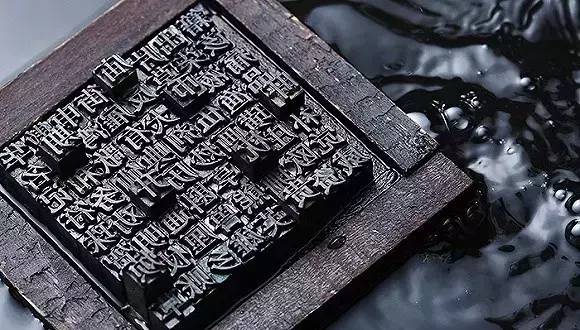
Compared with the Chinese tourists who started grabbing tickets three months in advance, it was Disney itself who had greater expectations for Shanghai Paradise. In order to be as perfect as possible in localization, let’s take a look at this detail: If you pay close attention, you will find a subtle difference from Hong Kong Disneyland—all the signs in the park have Chinese translations , and the fonts of the Chinese logos are specially designed to maintain the same style as the English fonts.
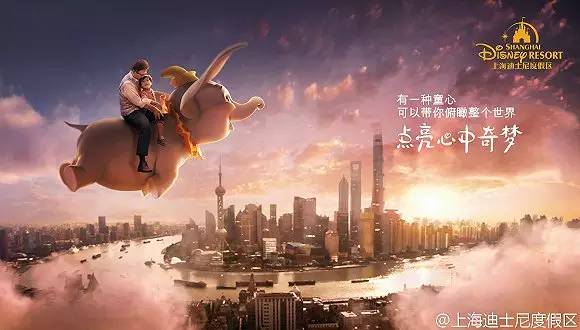
The words "Light up the dream in my heart" and "Shanghai Disney Resort" are both designed by the character making studio. Image source: Official Weibo of Shanghai Disney Resort
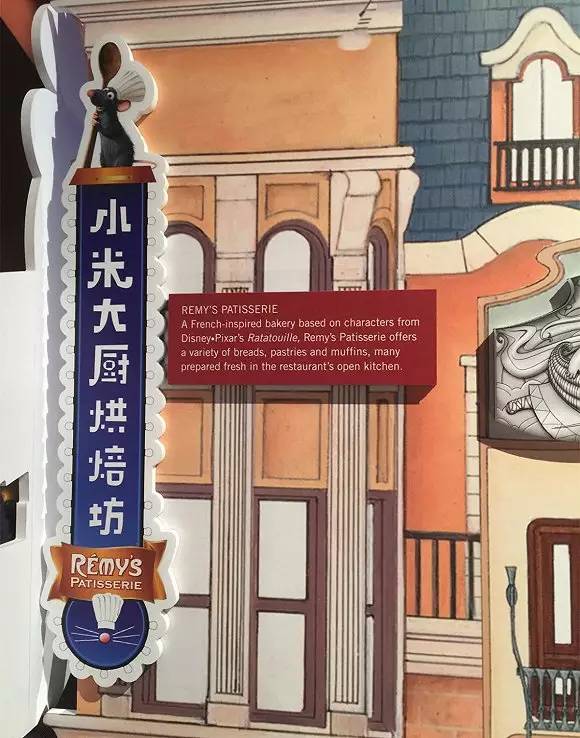
The words "Xiaomi Chef Bakery" were designed by the character making studio. Image source: Official Weibo of Disney Shanghai Resort

The word "Treasure Bay" was designed by the Chinese character workshop. Image source: Official Weibo of Shanghai Disney Resort
These Chinese fonts specially customized for Disney are mostly designed by a small company called "Zaozi Gongfang" in Weifang. From theme parks, restaurants, hotel signs, to toilets, there are thousands of Chinese characters in hundreds of places, all of which were created by Ding Yi, the founder of the character making studio.
Since 2012, Disney has become the largest client of this type design company with only about 10 people. As a font company established only 7 years ago, Ding Yi has become an enviable role model in the industry when he received a million-dollar customer order like Disney. At the same time, he quietly pushed an industry that people did not pay much attention to before. .
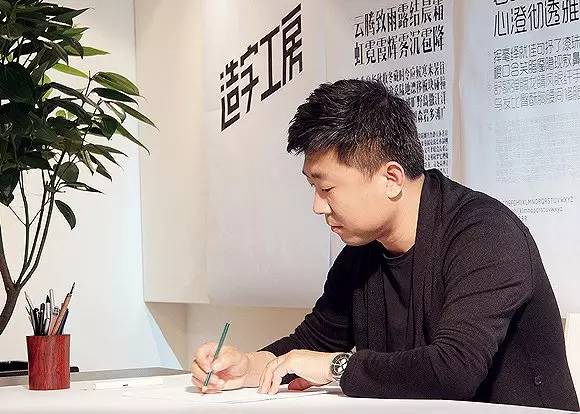
Ding Yi, the founder of Zizigongfang Photo source: provided by Ding Yi
The font industry in China has been depressed for too long. For many years, people knew little about fonts and had no sense of copyright. Except for state-owned enterprises capable of doing font design, font design can only be reduced to a hobby of a small group of designers, and the few practitioners in this industry can hardly make any money.
However, in recent years, with the rise of social media, the improvement of the public's aesthetic awareness, and the improvement of the copyright environment, some small font design companies like Zizi Workshop have begun to emerge. Although the number of these companies is still "countable with fingers", this "sunset industry" is seeing hope again.
In the Wudaokou office building in Beijing, a font design company named Wenyue Technology raised an angel investment in the first half of 2015. Its founder, Li Xiangchen, is also a new "popular man" in this industry. In 2010, when the post-90s were still studying, they designed a retro character called Kangxi Dictionary. After attracting a lot of attention on the Internet, this ancient font gradually became a symbol of "little freshness" and "literary style", and was used in various postcards, tea packaging and cosmetic packaging, many of which Well-known brands like Yunifang.
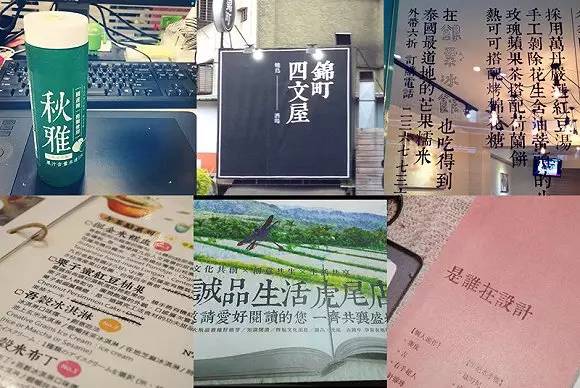
Kangxi dictionary style image source: Wenyue Technology
In 2013, the copyright of the Kangxi Dictionary font was bought out by Diao Ye of Afu Essential Oil at a considerable fee. This has become another inspirational story in the font design industry. After observing for several years, last year he finally decided to turn this hobby into his own business, but he gave the company a name that sounds more in line with the wave of Internet entrepreneurship.
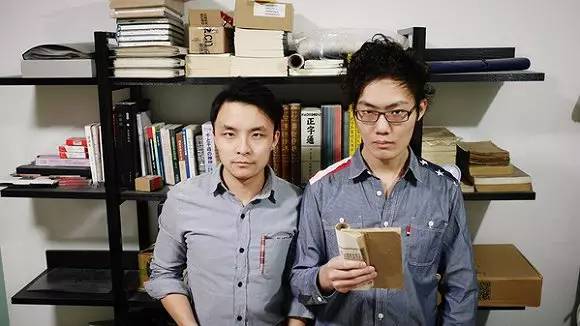
Li Xiangchen (right) and his partner Guo Fan (left) Source: Wenyue Technology
Whether it is Li Xiangchen or Ding Yi, they both believe that the good times of the font industry have just begun.
The decline of typography industry in China
In fact, the font industry also had a "golden age" in China. In the 1990s, there were dozens of large and small font library manufacturers in China. The more well-known ones include Founder, Hanyi, Huawen, Huaguang, Zhongyi, Stone, Great Wall, etc., with annual sales reaching billions of yuan. . At that time, the main customers of fonts—major publishing houses and printing houses—purchased directly from font library vendors.
But in the 21st century, the Internet came, and so did piracy. You should know that the font library is a business model that relies more on genuine sales than records.
To design a Chinese font, at least 6,763 characters are required, and more can reach 10,000 to 20,000 characters. Designing each word requires the designer to carefully outline and adjust stroke by stroke. It takes at least half a year for a team of several people, and it takes two to three years at most. The long development process and expensive development costs must rely on repeated large-scale sales in the later stage, so that a font can make money.
The emergence of piracy has completely destroyed the profit model of the font library. For example, Hanyi's original 1,000 yuan font was later discounted to 50 yuan due to the intrusion of pirated copies, and the annual sales were only tens of thousands of yuan. The Fangzheng Jinglei font library developed by Fangzheng Zeng and Xu Jinglei is priced at 10 yuan per set, and only more than 2,000 sets of genuine software have been sold, while there are hundreds of thousands of pirated sets on the market.
So ten years ago, the development of China's font industry stagnated. At that time, the number of font companies in the market dropped sharply to about 5, including Founder and Hanyi, and they did not make money all the year round. The largest Founder font actually relied on other businesses of Founder Electronics for subsidies.
This makes Chinese fonts fall into a serious shortage. When Ding Yi was working as a graphic designer on a website, he found that Chinese fonts were often not enough. Many designers will try to design some by themselves, but they can't make a complete font library at all.
Ordinary Chinese people at that time hardly knew that there was another profession called font designer, and people couldn’t even tell the subtle differences between different HeiTi and SongTi. Just know the signboard.
"99.9% of the common people don't know that fonts are designed one by one." Huang Xuejun, deputy general manager of Founder Electronic Font Bank Business Department, lamented to Jiemian journalists, "They think this thing is made by machines, and they write it horizontally and vertically. Na, throw it into the machine, and the bold and Song typefaces will come out."
How big is the gap between Chinese and foreign font design industries? Just look at these comparative figures: there are millions of English fonts, but only a few thousand Chinese fonts. If it is unfair to compare with English fonts with only 26 letters, compared with Japan, the second largest user of Chinese characters, it has more than 3,000 Chinese fonts. There are only more than 600 species in mainland China, more than 300 species in Taiwan, and more than 100 species in Hong Kong, China.
This is directly linked to the profitability of typography as a business. In Japan, the largest font library of Morisawa Company has an annual revenue of more than 100 million yuan, and the American font company Monotype Imaging has been listed on NASDAQ, with an annual revenue of more than 100 million US dollars. In mainland China, due to meager profits, font companies are still struggling to survive.
Therefore, this industry in China is naturally facing the dilemma of withering talents for a long time, and the speed of product development cannot keep up with the demand of the market. "Many of the school's textbooks on font design have not been updated for many years. The school lacks teachers who can teach font design, so it is impossible to have high-level courses to teach." Huang Xuejun said.
There is one thing that has always made Huang Xuejun feel emotional. At an international font design exchange conference a few years ago, some Japanese designers were talking about the design of Chinese Mongolian and Tibetan. "Actually, Fangzheng has been designing fonts for Mongolian and Tibetan 20 or 30 years ago, but no one went up to talk about them. They can only sit down and listen to foreigners. This is very stimulating to me." Huang Xuejun explain. The downturn in the industry has made international academic exchanges lose confidence.
Of course, in places where the font industry is prosperous in Japan, Europe and the United States, they first have a good copyright environment. Designers can earn money, and the market is good to attract more practitioners, so that the entire industry can operate in a healthy way.
So in China, in the past ten years, the font design industry has almost become a rights protection industry. Since 2007, Founder has launched two protracted copyright lawsuits, one against the game company Blizzard and the other against Procter & Gamble.
The lawsuit between Fangzheng and Blizzard lasted 5 years from the first instance to the second instance. Although the court eventually supported Fang Zheng, believing that Blizzard had infringed, it only awarded 2 million yuan in compensation, which was far from Fang Zheng's claim.
Another lawsuit against Procter & Gamble initiated in 2008. Until the end of the final trial in 2011, the court did not recognize whether the word "Rejoice" had the copyright of a work of art, and finally ruled that Fangzheng lost the lawsuit.
Because the size of the font industry is too small, there is no special legislation on printing fonts and their individual characters in China like the United Kingdom and the United States. The current copyright law also lacks a clear definition of works related to emerging technologies such as the Internet and software. defined. This makes protecting rights through litigation a time-consuming and expensive matter. Ordinary small companies and independent font designers simply do not have the energy to defend their rights through litigation.
Social networking has brought a turning point to the industry
However, with the rise of social networks, the industry has gradually begun to turn around. The rise of Sina Weibo in 2010 not only created a large number of opinion leaders and Internet celebrities, but also made independent font designers see the dawn. In addition to embarking on a long and expensive road to litigation, in this field of public opinion surrounded by the whole people, font designers can actually use another method to defend their rights: posting on Weibo.
The movie "33 Days of Broken Relationship" released during "Singles' Day" in 2011 raked in 300 million at the box office. At that time, the little-known character-making studio stated on its official Weibo that the movie "33 Days of Broken Love" used a large number of Yuehei fonts developed by itself infringing, and demanded to recover the usage fee at the original price of 20,000 yuan per style per year. As soon as the news came out, a large number of netizens expressed solidarity with the character workshop, and many media followed up and reported it. Under the pressure of strong public opinion, the film crew of "33 Days of Broken Relationship" finally paid compensation to the character making studio.
Another incident of rights protection that made Zizhifang famous was against the hit variety show "I Am a Singer 3". On the second day after the program was broadcast, Zizhi Gongfang stated through Weibo that the unauthorized use of its typeface by the "I Am a Singer 3" program group is an act of copyright infringement and piracy, and it will demand a copyright fee of 150,000 yuan from it.
Ding Yi's character-making workshop has attracted the attention of many mainstream media, including "People's Daily", "New Weekly" and "Caijing". The public also began to gradually understand the profession of font designer, and gradually realized that using fonts also costs money.
Type designers seem to have found a new career path. With the development of social networks, designers no longer have to work in large design companies as before, but can carry out personal independent design, release products, promote products, contact customers, protect rights and even interact with fans through the Internet. They have more flexible work options, instead of concentrating in first-tier cities like Beijing and Shanghai, small companies or studios with a few people can be opened anywhere with internet access, such as third-tier cities like Weifang, Kunming, and Changzhou.
Ding Yi, who used to be the website design director of Beijing Fashion Group, later returned to Weifang, where the cost of living and starting a business is lower. Xindi Font Studio was established in 2010. The founder Wang Wei is a graduate of the English major of the University of Hong Kong. After graduation, he did not choose to stay in the big city, but chose to return to his hometown Kunming. He originally designed fonts while offering English training classes. Later, he completely put down the work of training classes, opened a small studio with his wife, and began to design fonts full-time. Today, they have launched 11 different fonts.
This is why most of the emerging font design companies we see today were established after 2009. They can conduct sufficient business discussions on Weibo, Zhihu, and Douban, and also popularize font design knowledge for the public.
They can even explore opportunities to "change destiny" through the Internet. Ding Yi's order from Disney was also out of "accident". In 2010, the movie "Alice in Wonderland" produced by Disney was released in China. Out of professional sensitivity, Ding Yi realized that the Chinese font style of the domestic version of the poster did not match the original English version, so he decided to redesign a version. "It took me about an afternoon to design it and put it on my blog." Ding Yi said, "It was meant to be fun at first, but I didn't expect it to become popular on the Internet, and the Disney film crew also noticed it."
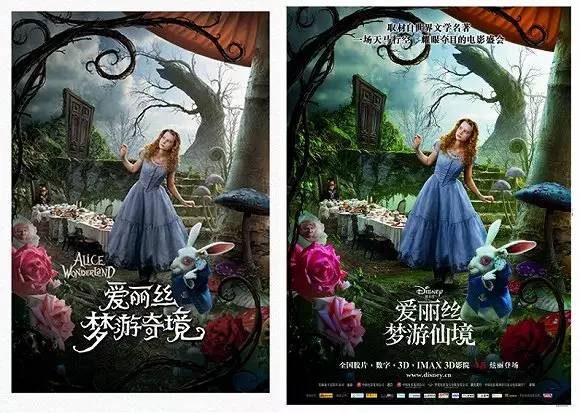
Alice movie poster (left) and original Chinese version poster (right) designed by Ding Yi
Although the movie poster did not change its design in the end, Disney remembered the name of Ding Yi, a Chinese font designer. Two years later, Disney handed over the font design order for the Shanghai Resort to him. And this order has completely allowed the company of the word making workshop to survive.
Even traditional font design companies like Founder have begun to cooperate more with folk artists and emerging cartoonists through the Internet to develop more fun and personalized fonts that are more attractive to young people.
In 2011, the deeds of a disabled artist called "Chalk Brother" Cui Xianren shocked the Internet. He wrote original chalk characters with disabled hands. In 2013, Fangzheng and Cui Xianren cooperated to develop the Fangzheng Xianren font. Cui Xianren owns all the copyright proceeds of this font within 50 years.
More creative fonts in cooperation with web comics Jiajidi, Yu Yanshu, and Miaowu, which surprised people who are used to the square and serious 800-style fonts. The "screaming body" and "roaring body" that express intense emotions, the "four-and-a-half-year-old body" that expresses the true nature of young children, and even the "cat in the body" with a large number of cat symbols, all surprised young people who love new things. It turns out that fonts can be so interesting.
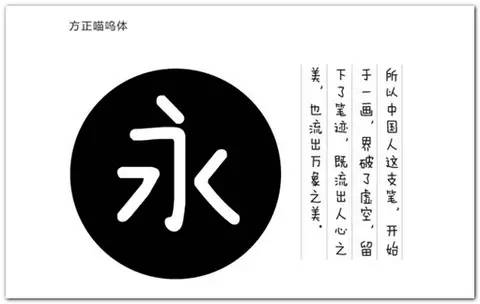
Founder Meow Body Image Source: Internet
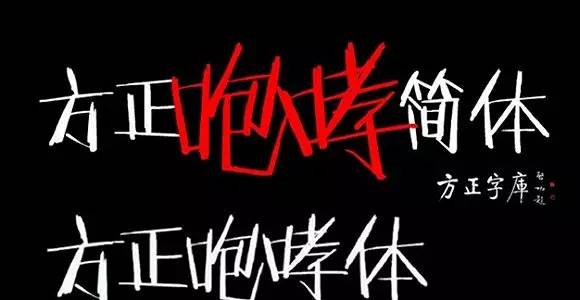
Founder Roaring Body Image Source: Internet
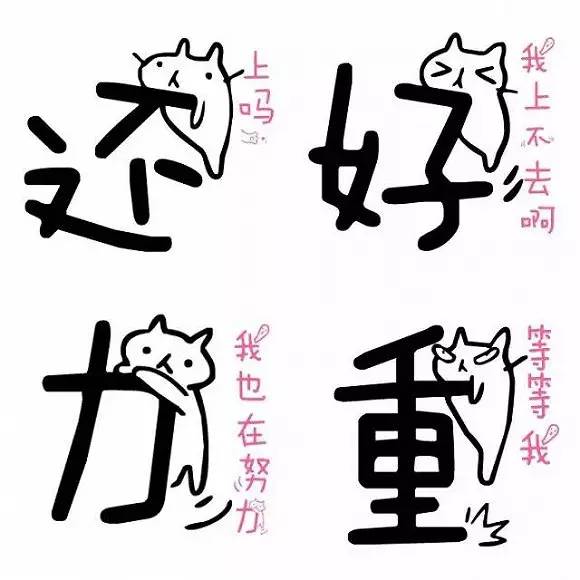
Fangzheng has a cat in his body Image source: Internet
"Founder Typeface is like a big store. We have luxury goods, supermarkets, and small brand stores." Huang Xuejun said. Today, among the new fonts launched by Founder every year, the proportion of personalized creative fonts has exceeded half.
The font design industry is still a blue ocean
In theory, all graphic designers should have the ability to design fonts, because font design is a basic subject in graphic design. Moreover, typography is an art that designers can easily fall in love with. Different fonts often have different temperaments. "HeiTi and SongTi are like suits, orthodox and classic; creative fonts such as handwriting and cartoon fonts are like fast fashion like Uniqlo and ZARA." Ding Yi said.
And different black bodies actually have different temperaments, "Fang is trying to make the black body younger, the long black series is elegant and elegant, and the handsome black series is tough and slender." Huang Xuejun introduced, although the difference between different black bodies is only in the Very nuanced.
Like fashions in clothing, fashions in typography are in a cycle of constant change. The popularity of retro fonts now just shows this point. "Nowadays, when designing fonts, people will find inspiration from inscriptions and ancient books. People have different needs in different eras, and related designs will never stop." Huang Xuejun said.
Although dozens of Chinese fonts are increasing every year, they are far from meeting the huge market demand. More and more occasions require fonts with a sense of design to enhance the temperament. Brands hope to use fonts to enhance their image in the minds of consumers. Young people also like to use some more personalized fonts on their mobile phones.
In the past, the major customers of font library providers were mainly traditional media such as publishing houses, magazines, and TV stations, but the current trend is that there are more and more corporate customers and even start-up companies. For example, more than 2,000 companies have purchased font licenses from Founder.
With the development of screen technology, fonts can be presented in perfect detail on the screen, and the changes in reading habits from PCs to mobile terminals have also put forward more requirements for font design. Butter Camera is a typical example. This picture app launched in December 2014 is based on fonts. It is different from other picture tool software in that it allows users to add text in various fonts on pictures to create A picture with a sense of design.
According to Si Ri, the founder of Butter Camera, this app has purchased more than 100 genuine fonts, and in order to cultivate user habits, some fonts are paid for use. But Si Ri is also troubled, there are still not enough fonts to choose from, for example, there is a lack of fonts specially designed for graphic typesetting on the market. As a start-up company, Butter Camera does not have the ability to customize fonts like Disney. So he decided to join the ranks of font design and hired a font designer to develop it himself for a year.
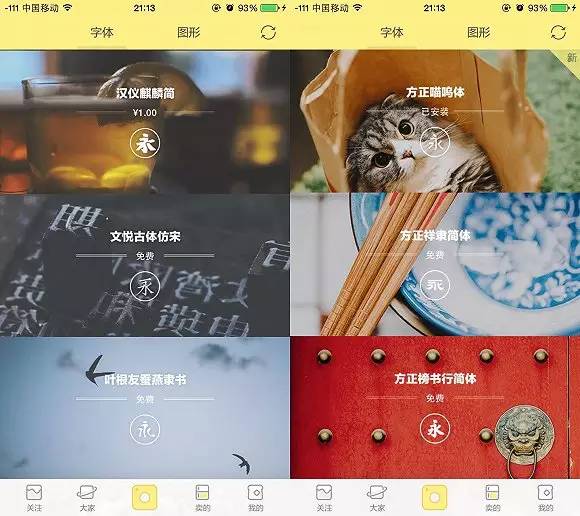
butter camera
“Too many fonts need to be developed, and the positioning of each font design company is different. The market is huge, so I am not too worried about competition.” Ding Yi said.
While type designers think the industry is getting better, it is still difficult to make money from typography. Even the profitability of the star company in this industry - the word making workshop is not optimistic. Ding Yi revealed that although the company’s annual sales have reached several million, the ordinary font business is not profitable, and it needs other relatively high-priced font customization businesses such as Disney and the movie "Golden Age" to subsidize.
The licensing model of fonts today basically separates personal non-commercial use from commercial use. The licensing price for commercial use ranges from several thousand to tens of thousands per type per year, and the packaged permanent licensing price will be more favorable; for personal For non-commercial licenses, the price is lower, basically free to use, or a symbolic "reward" of 1 to 2 yuan on Taobao.
According to Ding Yi's introduction, the cost of developing a typeface for Zizi Workshop is hundreds of thousands, and some complicated ones even cost millions. If the infringement problem cannot be solved fundamentally, it will still be a big challenge to develop this industry. Not only large companies, but also small and medium-sized enterprises and self-employed individuals in the market, everyone needs to establish awareness of font copyright.
In addition to copyright issues, talent is another major challenge facing the industry. For the past ten years, Founder has held font design competitions every two years, and this year is the eighth. This time they even put the award ceremony and exhibition at the National Center for the Performing Arts, on the one hand to increase academic exchanges in the industry, on the other hand to attract more young designers who are passionate about fonts, and try to dig out some possibilities for commercial cooperation.
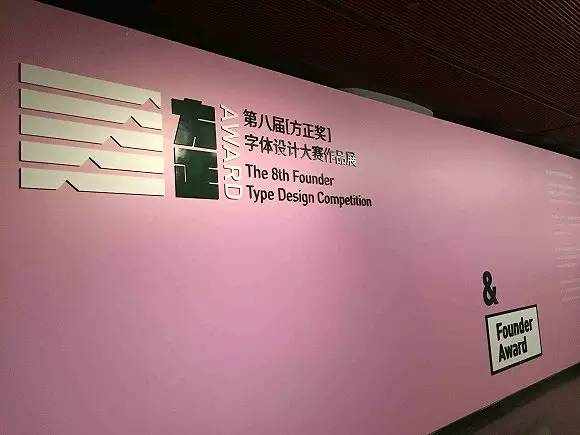
Exhibition of the 8th "Founder Award" Font Design Competition Image source: Jiemian News
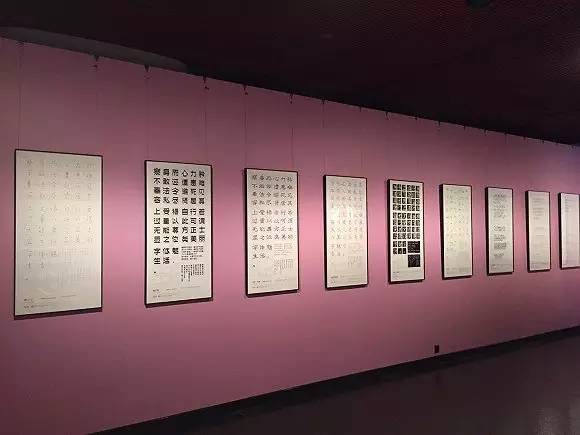
Exhibition of the 8th "Founder Award" Font Design Competition Image source: Jiemian News
If you want to become a font designer, you still mainly rely on love and feelings. For example, Li Xiangchen did not study design, but he accidentally became interested in font design during his studies, so he got out of hand. According to Li Xiangchen, his investors are willing to pay more out of sentimentality.
Another example is Ding Yi, who has been obsessed with designing blackboard newspapers and writing calligraphy since he was a child. He started handwriting calligraphy signboards for others after dropping out of middle school. , almost never left the font for more than 20 years.
"From the bottom of my heart, I have always had a feeling of gratitude for Chinese characters. If there is no font design, I may still be growing vegetables in my hometown in the countryside." In the high-level office of Weifang Wanda Plaza, Ding, who was born in a farm I lamented the life change that fonts brought to him.
(At the request of the interviewee, please specify: "Founder" mentioned in the article refers to "Founder Electronics" under the Founder Group.)
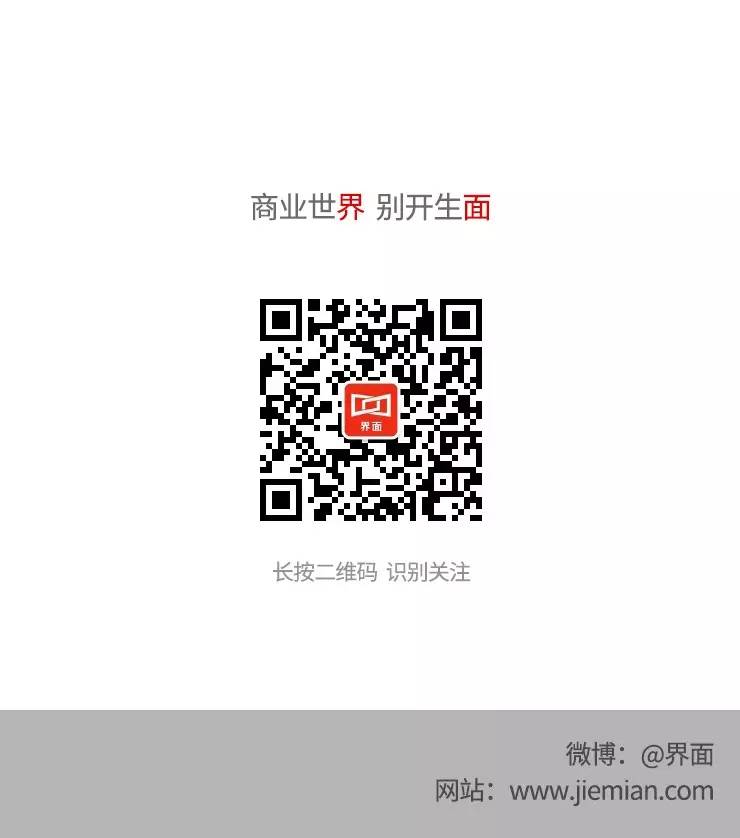
Articles are uploaded by users and are for non-commercial browsing only. Posted by: Lomu, please indicate the source: https://www.daogebangong.com/en/articles/detail/Typography%20An%20industry%20that%20has%20been%20dormant%20for%20years%20finally%20sees%20hope.html

 支付宝扫一扫
支付宝扫一扫 
评论列表(196条)
测试